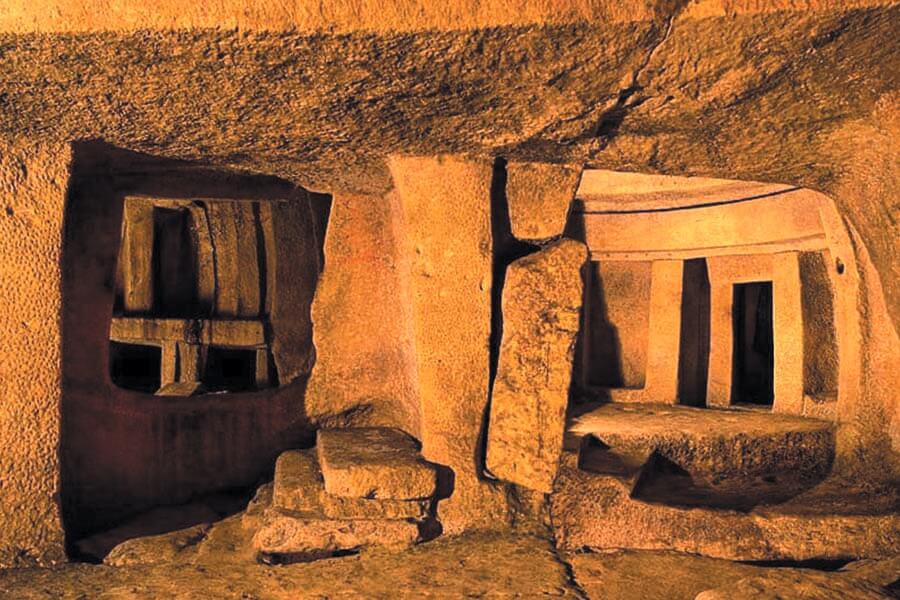
The Hypogeum of Ħal Saflieni is a Neolithic subterranean structure dating to the Saflieni phase (3300 – 4000 BC) in Maltese prehistory, located in Paola, Malta. It is often simply referred to as the Hypogeum (Maltese: Ipoġew), literally meaning “underground” in Greek.
The Hypogeum is thought to have been a sanctuary and necropolis, with the remains of more than 7,000 people documented by archaeologists, and is among the best-preserved examples of the Maltese temple building culture that also produced the Megalithic Temples and Xagħra Stone Circle.
The Ħal Saflieni Hypogeum is a complex made up of interconnecting rock-cut chambers set on three distinct levels. The complex was used over many centuries, with the earliest remains and the more recent remains found dating to the Early Bronze Age (ca 1500BC).
Interesting facts about
The Hypogeum
The uppermost level consists of a large hollow with burial chambers on its sides. This area may have been originally exposed to the sky. Excavations in the early 1990s indicate that there probably was a monumental structure marking the entrance.
A doorway leads to the Middle Level, which contains some of the best-known features of the Hypogeum. These include intricate red ochre wall paintings and beautifully carved features that recall architectural elements common in contemporaneous megalithic temples.
The deepest of the three levels, known as the Lower Level, is accessed down seven steps from the chamber which is popularly known as the ‘Holy of Holies’.
Less than 20 skulls out of a prospective 7,000 people survive till this day and the first-ever interdisciplinary analysis of the remains aims to sift science fact from fiction.